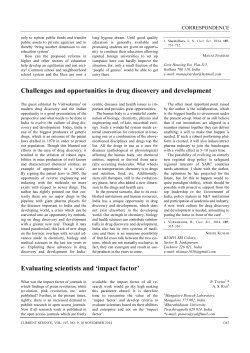
covalent network - SCH4U1-CCVI
Covalent Network Solids Carbon • exhibits the most versatile bonding of all the elements • diamond structure consists of tetrahedral sp3 carbons in a 3-dimensional array • graphite structures consist of trigonal planar sp2 carbons in a 2-dimensional array sheets attracted by weak dispersion forces • fullerenes consist of 5 and 6 member carbon rings fused into icosahedral spheres of at least 60 C Tro, Chemistry: A Molecular Approach 2 Allotropes of Carbon - Diamond Inert to Common Acids Inert to Common Bases Negative Electron Affinity Transparent Hardest Best Thermal Conductor Least Compressible Stiffest Tro, Chemistry: A Molecular Approach 3 Allotropes of Carbon - Graphite Soft and Greasy Feeling Solid Lubricant Pencil “Lead” Conducts Electricity Reacts with Acids and Oxidizing Agents Tro, Chemistry: A Molecular Approach 4 Allotropes of Carbon Buckminsterfullerene Sublimes between 800°C Insoluble in water Soluble in toluene Stable in air Requires temps > 1000°C to decompose High electronegativity Reacts with alkali metals Behavior more aliphatic than aromatic Tro, Chemistry: A Molecular Approach 5 Nanotubes • long hollow tubes constructed of fused C6 rings • electrical conductors • can incorporate metals and other small molecules and elements used to stabilize unstable molecules • single-walled nanotubes (SWNT) have one layer of fused rings • multi-walled nanotubes (MWNT) have concentric layers of fused rings Tro, Chemistry: A Molecular Approach 6 Nanotubes Tro, Chemistry: A Molecular Approach 7 Nanotubes • carbon nanotube = sp2 C in fused hexagonal rings electrical conductors • boron-nitride nanotubes = rings of alternating B and N atoms isoelectronic with C similar size to C average electronegativity of B & N about the same as C electrical insulators Tro, Chemistry: A Molecular Approach 8 Insulated Nanowire Tro, Chemistry: A Molecular Approach 9 Boron • metalloid • less than 0.001% in Earth’s crust, but found concentrated in certain areas almost always found in compounds with O borax = Na2[B4O5(OH)4]8H2O kernite = Na2[B4O5(OH)4]3H2O colemanite = Ca2B6O115H2O • used in glass manufacturing – • borosilicate glass = Pyrex used in control rods of nuclear reactors Tro, Chemistry: A Molecular Approach 10 Boron-Oxygen Compounds • form 2D structures with trigonal BO3 units • in B2O3, six units are linked in a flat hexagonal B6O6 ring melts at 450C melt dissolves many metal oxides and silicon oxides to form glasses of different compositions Tro, Chemistry: A Molecular Approach 11 Silicates • the most abundant elements of the Earth’s crust are O and Si • silicates are covalent atomic solids of Si and O and minor amounts of other elements found in rocks, soils, and clays silicates have variable structures – leading to the variety of properties found in rocks, clays, and soils Tro, Chemistry: A Molecular Approach 12 Bonding in Silicates • each Si forms a single covalent bond to 4 O sp3 hybridization tetrahedral shape Si-O bond length is too long to form Si=O • to complete its octet, each O forms a single covalent bond to another Si • the result is a covalent network solid Tro, Chemistry: A Molecular Approach 13 Quartz • a 3-dimensional covalent • • • network of SiO4 tetrahedrons generally called silica formula unit is SiO2 when heated above 1500C and cooled quickly, get amorphous silica which we call glass Tro, Chemistry: A Molecular Approach 14 Single Chain Silicates • if the SiO44- units link as long • • chains with shared O, the structure is called a pyroxene formula unit SiO32chains held together by ionic bonding to metal cations between the chains diopside = CaMg(SiO3)2 where Ca and Mg occupy lattice points between the chains QuickTime™ and a decompressor are needed to see this picture. QuickTime™ and a decompressor are needed to see this picture. Tro, Chemistry: A Molecular Approach 15 Double Chain Silicates • some silicates have 2 chains bonded together at ½ the tetrahedra – these are called amphiboles • often results in fibrous minerals asbestos tremolite asbestos = Ca2(OH)2Mg5(Si4O11)2 Tro, Chemistry: A Molecular Approach 16 Sheet Silicates • when 3 O of each tetrahedron are shared, the result is a sheet structure called a phyllosilicate • formula unit = Si2O52− • sheets are ionically bonded to metal cations that lie between the sheets • talc and mica Tro, Chemistry: A Molecular Approach 17 Mica: a Phyllosilicate Tro, Chemistry: A Molecular Approach 18
© Copyright 2025











